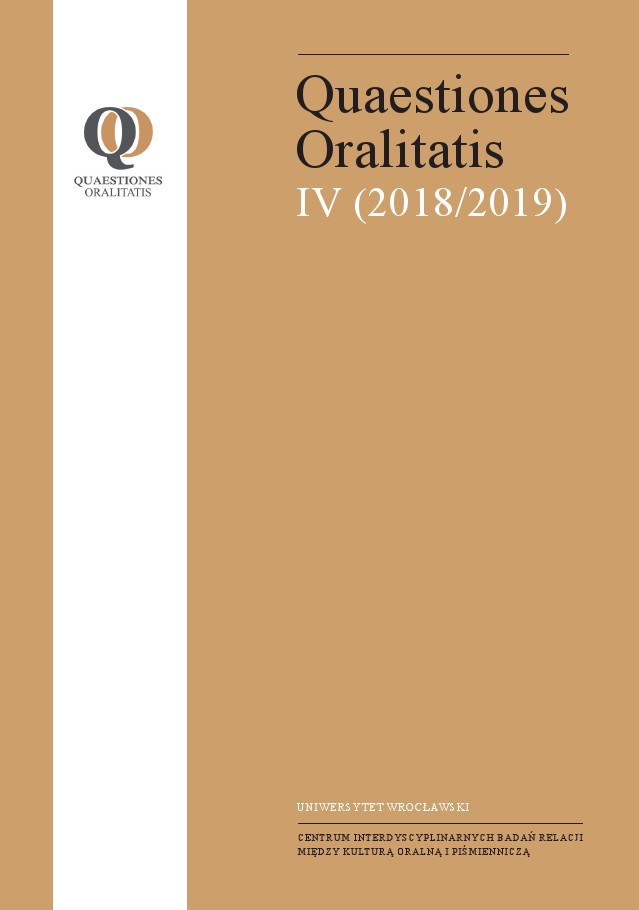ORALITY IN WRITING: THE CASE OF JEU D’ADAM (XII SEC.)
ORALITY IN WRITING: THE CASE OF JEU D’ADAM (XII SEC.)
Author(s): Sonia Maura BarillariSubject(s): Language and Literature Studies
Published by: Centrum Interdyscyplinarnych Badań Relacji między Kulturą Oralną i Piśmienniczą, Uniwersytet Wrocławski
Keywords: Jeu d’Adam; medieval theatre; director’s notes; punctuation; mise en page
Summary/Abstract: The Jeu d’Adam is the oldest theatrical text written in a vernacular language that has come down to us in its entirety. Composed around the mid-twelfth century, it has survived in only a single witness (Tours, Bibliothèque municipale, ms. n° 927, cc. 20r–40r) datable to the second quarter of the thirteenth century. The peculiarity that better characterizes the Jeu d’Adam is undoubtedly its large apparatus of Latin stage directions, aimed to regulate its staging scrupulously.The zeal lavished in the attempt to regulate diction by a pervasive and careful use of punctuation marks is very important. Considering the dating of the code, it appears sufficiently diversified, contemplating the punctus planus, placed both at the foot of the letter and in the middle position, the virgula (´), the punctus elevatus (.´) and the punctus interrogativus (two points with one or two virgulae on their top).The iterated use of the punctus interrogativus to indicate an interrogative or exclamatory intonation – extremely rare in the other manuscripts of the same time – is motivated both by the will to suggest in turn the appropriate intonation for the sentences in the form of direct speech, and by the ‘paraliturgical character of the Jeu, shaped by the concrete needs of the staging without however never abdicating its edifying purposes.
Journal: Quaestiones Oralitatis
- Issue Year: IV/2019
- Issue No: 1
- Page Range: 191-209
- Page Count: 19
- Language: English

